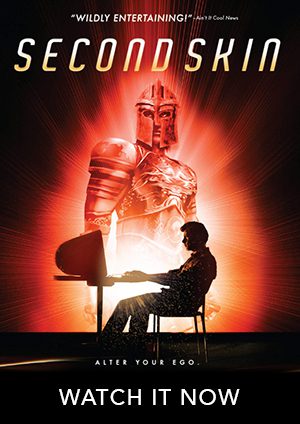As I’ve said time and time again, I love Atlus and its Shin Megami Tensei franchise. So, when Atlus announced Shin Megami Tensei IV (SMT4) on 2012.05.31 in a two-page spread in Famitsu Magazine, I was very excited, but I was a little disappointed when I heard it was for the Nintendo 3DS, because I didn’t have one at the time, and the system really didn’t interest me. Later on though, I purchased one, because all my friends were playing Fire Emblem: Awakening and went on and on about how great it was. I digress though. Is Shin Megami Tensei IV a sequel and game worthy of being in the Shin Megami Tensei multiverse?
The Megami Tensei (commonly shortened to MegaTen) franchise of role-playing games (RPGs) has a deep and rich history. The first game was released in 1987, and the franchise has since come to be hailed as the third most popular RPG series in Japan, after Dragon Quest and Final Fantasy. After localizing and releasing Shin Megami Tensei: Nocturne on the PlayStation 2 on 2004.12.04, Atlus USA began giving all following MegaTen releases the Shin Megami Tensei prefix, regardless of whether or not it’s a spin-off (like the Persona games). That said, the only other true Shin Megami Tensei game we’ve gotten, besides Nocturne and the MMO Imagine, is Strange Journey, released for the Nintendo DS on 2010.03.23. I am very happy to say that SMT4 is a true SMT game.

In the Eastern Kingdom of Mikado, it is a Samurai’s duty to keep the kingdom safe from demons. Every year, the kingdom holds the Gauntlet Rite to choose who will become Samurai. You arrive to participate in this year’s Rite and are chosen. You have almost no time to celebrate though, as things begin to go downhill very quickly. It is now up to you and your fellow Samurai to carry out your duty, but what will you find on your journey?
Much like Nocturne, SMT4 is in third-person view, as opposed to earlier games’ first-person view, which was most recently featured in Shin Megami Tensei: Devil Summoner: Soul Hackers. Personally, I much prefer third-person view, because you can see more of the environment than you can in first-person view. As such, I feel like I can appreciate the world more.

Carrying out your Samurai duty is broken up into Quests, assumingly to make the game easier to pick up, play and put down. Each quest varies in length and difficulty. One quest might have you collect 5 items, while another has you clear a dungeon and defeat its boss. There are also 2 kinds of quests — Story Quests, and Challenge Quests. Story Quests are… well, quests that progress the game’s story. Challenge Quests on the other hand, don’t progress the story, but are a way to gain more Experience Points (EXP), money, and items. As your EXP grows, you become stronger (or level up), as do your party members, and some even evolve when they level up.
Demons are visible while exploring, so you can try to avoid them, or you can try to sneak up on them and land a blow, which grants your party first strike in battle. However, demons can do the same, so be careful. The Press Turn battle system from Nocturne and the Shin Megami Tensei: Digital Devil Saga games also returns.

Almost every enemy has a weakness and a strength. Exploiting a weakness (let’s say you’re fighting an enemy that uses fire. Its weakness would be ice. So you’d use an ice-based attack) gives that character an extra attack. So keep exploiting weaknesses. However, if you use an attack an enemy is strong against (ie: you use a fire-based attack against that same enemy), you get one of 3 adverse effects: 1) the enemy will absorb the attack and regain health, 2) it will repel it back at you, or 3) it will nullify it altogether. Also, attacking with an enemy’s strength will also make you lose 2 attacks. However, enemies can also exploit your weaknesses. So, be careful, pay attention and exploit. Defeating enemies will give you EXP and items.

In SMT4, you have the ability to talk to demons. You can persuade demons to join your party, although they won’t join you for nothing. Some demons will ask you to give them something, like an item, money, even some of your HP and MP. Other demons will ask you questions, and your answers impact what the demon does. Every demon has its own personality, so even if you talk to 2 Centaurs in a row, their personalities might be different. Don’t assume “Oh, it’s a Centaur. They like Answer B,” because that’s probably not the case.
Persuading them to join you is only one way of obtaining new and more powerful demons. You can also take 2 or more of the demons that you already have, and fuse them into a new demon. True, you will lose the demons you use for the fusion, but the new demon will inherit skills from them, and you can even choose what skills it inherits. In previous games, you had to preview the fusion again and again, to make sure you get what skill(s) you wanted, but thankfully, not in SMT4. There are also over 400 demons in the game.
As with other games in the MegaTen multiverse, SMT4 features a branching story that you control using your choices in the game. There are also multiple endings, so the replay value is quite high. In addition, it has been confirmed that the game has DLC, so that will add to this 50+ hour game.
“Save early, save often” is something we’ve all learned using a computer, and SMT4 is no different. The game is in no way easy, so if you’ve only played the Persona games and come into SMT4 thinking you’re ready, it’s safe to say the game will kick your butt. Hell, I’ve played every PS2 SMT game that Atlus USA has brought over, and SMT4 still kicked my butt. In the third quest alone, I died a total of 6 times.
I have to say that I feel like SMT4 was really made for 3D. The game looks really good in 2D, but using 3D is really where it shines, as everything pops. Atlus’s internal Team Maniax really did a wonderful job. Yamai Kazuyuki and Ishida Eiji, both of whom worked on Nocturne — well, the version Atlus USA brought over — returned for SMT4: Yamai as the director, and; Ishida as the art director. Their background in Nocturne really shows in SMT4, and I’m glad it does.
As a first in the main series, Kaneko Kazuma did not handle the character and new demon designs. Instead, Kaneko provided story concepts. This time around, Doi Masayuki designed the characters. The MegaTen Wikia states that “[…] Yamai […] explained in an interview that he chose Doi as the character designer for the game since Doi is able to create simplistic characters that have a strong sense of presence.“

Koduka Ryota composed the music for the game. Koduka has worked on other games, such as Devil Survivor 2, Devil Survivor Overclocked, Devil Summoner: Soul Hackers, and Trauma Team. The Eastern Kingdom of Mikado has a medieval feel to it, and Koduka captures this perfectly in his music. I especially like the title screen, quest and battle music. These are very dramatic with a more edgy feel to them, something I love.
SMT4 is also the first game in the main series to feature full voice acting. The dialogue in the game reflects the medieval feeling. As such, the acting feels a little weird, but the voice cast pulls it off. As of the writing of this review, I’m unable to find a cast list, but I do believe I hear at least one returning actor. I will not say who, because I may be wrong.
There are a couple of Easter eggs in SMT4 if you’ve played Nocturne and Strange Journey. Specifically 2 character designs make appearances in SMT4, one from each game. When I saw them in the trailers, I immediately recognized them. Also, while not an Easter egg, another cool thing to note is how soon after the Japanese release we are getting the game. It was released in Japan on 2013.05.23, and we’re getting it on 2013.07.16. Not even 2 months later.
I really have one problem with SMT4, but it’s not related to the game itself. It has to do with the title. According to an interview with Kaneko, Strange Journey was developed as Shin Megami Tensei IV. However, since the game’s setting is vastly different than the series’s norm, it is not named as such. That may bug me, but it is what it is.
In conclusion, Shin Megami Tensei IV is definitely a game worthy of being called a successor to Nocturne. It carries on the feel, atmosphere, and difficulty of the series. I would, and will, recommend this game, without a shadow of a doubt. Especially if you’re fed up with a certain other RPG series and/or you’re already a SMT fan. I’m also already calling SMT4 one of my Top 3 3DS games of 2013.
Rating: ***** (5/5 Stars)
Shin Megami Tensei IV was developed by Atlus USA. It will be released on 2013.07.16 as both a physical retail version on game card, as well as a digital download on the Nintendo 3DS eShop, both of which have a MSRP of $49.99 USD, and are rated M for Mature. In addition, pre-orders and first press copies will be the Limited Edition. Atlus USA graciously sent me a copy of Shin Megami Tensei IV for review, and I would like to sincerely thank them for doing so.





